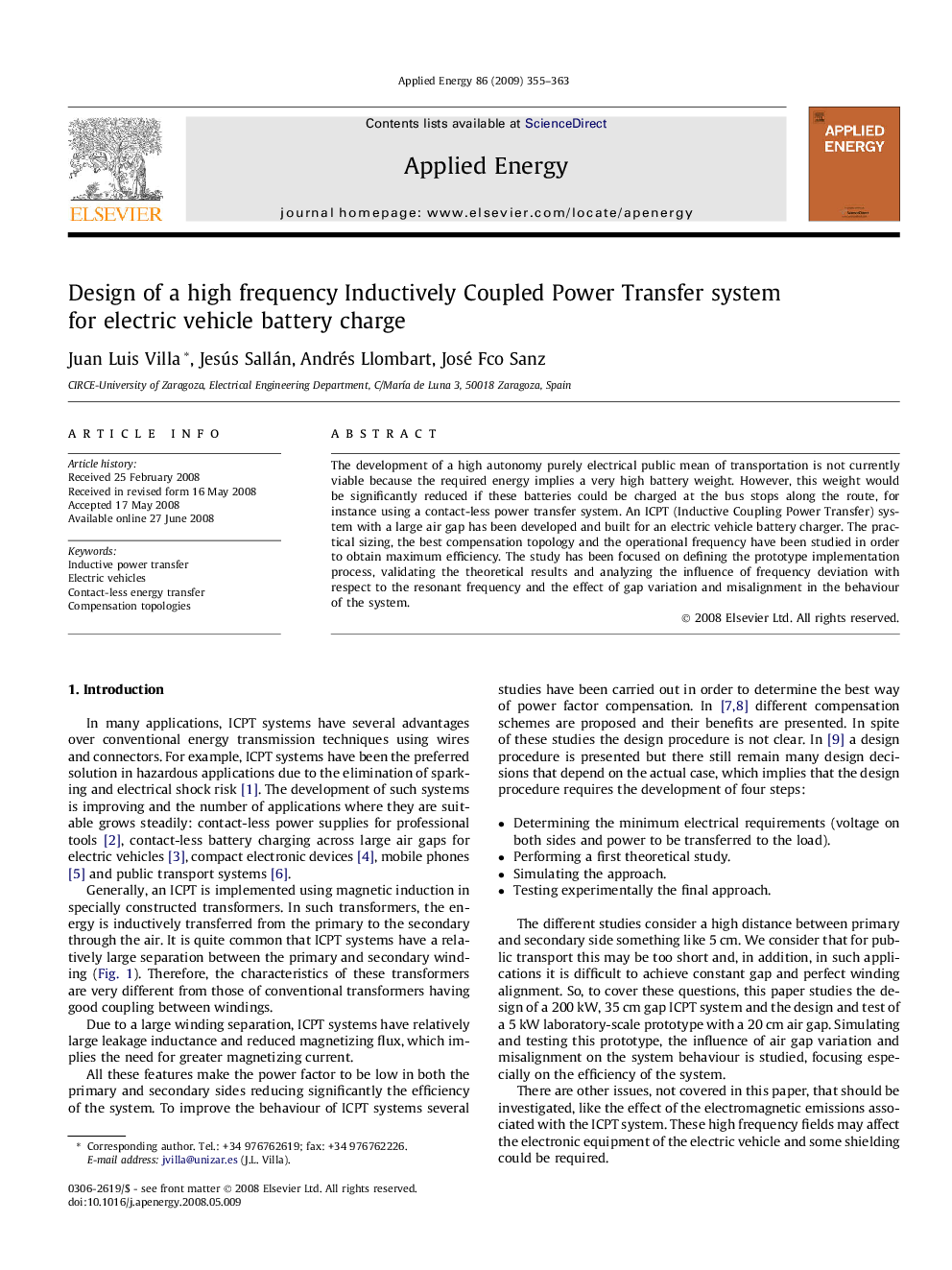| Article ID | Journal | Published Year | Pages | File Type |
|---|---|---|---|---|
| 245126 | Applied Energy | 2009 | 9 Pages |
The development of a high autonomy purely electrical public mean of transportation is not currently viable because the required energy implies a very high battery weight. However, this weight would be significantly reduced if these batteries could be charged at the bus stops along the route, for instance using a contact-less power transfer system. An ICPT (Inductive Coupling Power Transfer) system with a large air gap has been developed and built for an electric vehicle battery charger. The practical sizing, the best compensation topology and the operational frequency have been studied in order to obtain maximum efficiency. The study has been focused on defining the prototype implementation process, validating the theoretical results and analyzing the influence of frequency deviation with respect to the resonant frequency and the effect of gap variation and misalignment in the behaviour of the system.
